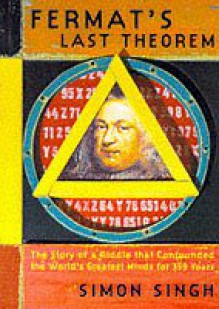Fermat's Last Theorem: The Story of a Riddle that Confounded the World's Greatest Minds for 358 Years
When Cambridge mathematician Andrew Wiles announced a solution for Fermat's last theorem in 1993, it electrified the world of mathematics. After a flaw was discovered in the proof, Wiles had to work for another year--he had already laboured in solitude for seven years--to establish that he had...
show more
When Cambridge mathematician Andrew Wiles announced a solution for Fermat's last theorem in 1993, it electrified the world of mathematics. After a flaw was discovered in the proof, Wiles had to work for another year--he had already laboured in solitude for seven years--to establish that he had solved the 350-year-old problem. Simon Singh's book is a lively, comprehensible explanation of Wiles's work and of the colourful history that has build up around Fermat's last theorem over the years. The book contains some problems that offer a taste for the maths, but it also includes limericks to give a feeling for the quirkier side of mathematicians.
show less
Format: hardcover
ISBN:
9781857025217 (1857025210)
Publish date: 1997
Publisher: Fourth Estate
Pages no: 351
Edition language: English
Category:
Non Fiction,
Biography,
History,
Academic,
European Literature,
British Literature,
Science,
Popular Science,
Philosophy,
History Of Science,
Mathematics

I bought this book after seeing the documentary that went with it.It tells how one person (Andrew Wiles) worked to prove a theorem that had stumped mathemeticians for over 3 centuries after reading about it when he was in primary school. Singh explains the ideas behind the eventual solution in a cle...

"My butter, garcon, is writ large in!"a diner was heard to be chargin'."I HAD to write there,"exclaimed waiter Pierre,"I couldn't find room in the margarine."Ever since I recently stumbled upon the documentary called 'The Proof' I've become extremely interested (almost obsessed) in Wiles's proof of ...

Very Enjoyable. Even if I didn't understand the difference between an elliptical equation and modular forms!

I guess the author does a reasonable job. But when I reached the end, I still didn't feel I understood at all how the proof worked. Probably that's just because it's so bloody hard. I got a lot more though out of Prime Obsession, Derbyshire's book on the Riemann Hypothesis, where the author opens up...






 8 years ago
8 years ago




 16 years ago
16 years ago




 26 years ago
26 years ago